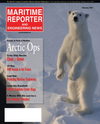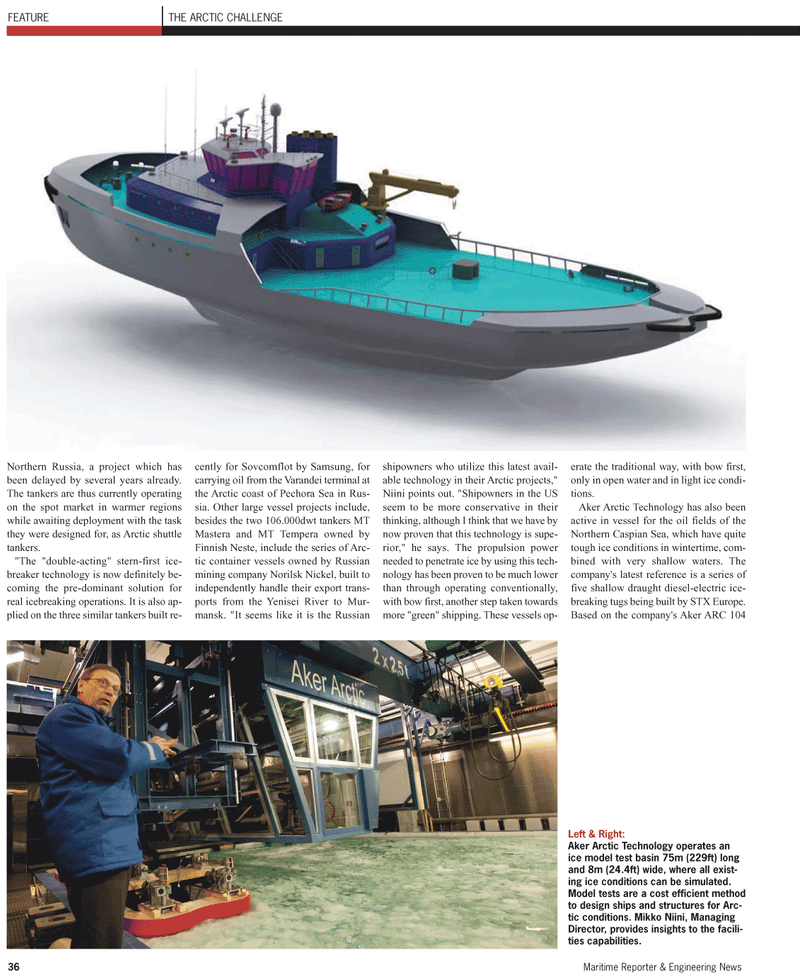
Page 36: of Maritime Reporter Magazine (February 2011)
Cruise & Passenger Vessel Annual
Read this page in Pdf, Flash or Html5 edition of February 2011 Maritime Reporter Magazine
Northern Russia, a project which has been delayed by several years already.
The tankers are thus currently operating on the spot market in warmer regions while awaiting deployment with the task they were designed for, as Arctic shuttle tankers. "The "double-acting" stern-first ice- breaker technology is now definitely be- coming the pre-dominant solution for real icebreaking operations. It is also ap- plied on the three similar tankers built re- cently for Sovcomflot by Samsung, for carrying oil from the Varandei terminal at the Arctic coast of Pechora Sea in Rus- sia. Other large vessel projects include, besides the two 106.000dwt tankers MT
Mastera and MT Tempera owned by
Finnish Neste, include the series of Arc- tic container vessels owned by Russian mining company Norilsk Nickel, built to independently handle their export trans- ports from the Yenisei River to Mur- mansk. "It seems like it is the Russian shipowners who utilize this latest avail- able technology in their Arctic projects,"
Niini points out. "Shipowners in the US seem to be more conservative in their thinking, although I think that we have by now proven that this technology is supe- rior," he says. The propulsion power needed to penetrate ice by using this tech- nology has been proven to be much lower than through operating conventionally, with bow first, another step taken towards more "green" shipping. These vessels op- erate the traditional way, with bow first, only in open water and in light ice condi- tions.
Aker Arctic Technology has also been active in vessel for the oil fields of the
Northern Caspian Sea, which have quite tough ice conditions in wintertime, com- bined with very shallow waters. The company's latest reference is a series of five shallow draught diesel-electric ice- breaking tugs being built by STX Europe.
Based on the company's Aker ARC 104 36 Maritime Reporter & Engineering News
FEATURE THE ARCTIC CHALLENGE
Left & Right:
Aker Arctic Technology operates an ice model test basin 75m (229ft) long and 8m (24.4ft) wide, where all exist- ing ice conditions can be simulated.
Model tests are a cost efficient method to design ships and structures for Arc- tic conditions. Mikko Niini, Managing
Director, provides insights to the facili- ties capabilities.

 35
35

 37
37
